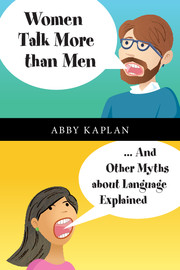Book contents
- Frontmatter
- Contents
- List of figures
- List of tables
- Acknowledgments
- 1 Introduction
- Part I … But is it language?
- 2 ‘A dialect is a collection of mistakes’
- 3 ‘Sign language is skilled charades’
- 4 ‘Chimpanzees can talk to us’
- Part II Language learning
- Part III Language in use
- Appendix A Statistics brief reference
- Language index
- People index
- General index
2 - ‘A dialect is a collection of mistakes’
from Part I - … But is it language?
Published online by Cambridge University Press: 05 April 2016
- Frontmatter
- Contents
- List of figures
- List of tables
- Acknowledgments
- 1 Introduction
- Part I … But is it language?
- 2 ‘A dialect is a collection of mistakes’
- 3 ‘Sign language is skilled charades’
- 4 ‘Chimpanzees can talk to us’
- Part II Language learning
- Part III Language in use
- Appendix A Statistics brief reference
- Language index
- People index
- General index
Summary
No language is spoken exactly the same way by everyone who uses it. On one level, there are idiosyncratic differences among individuals. For example, there may be particular words that you tend to use a lot that your friends use less often; the specific shape of your mouth and throat affects the way your voice sounds; and so on.
On another level, different groups of people may use their language in systematically different ways. Speakers are typically aware of some of these differences, and we use the word dialect to refer to an identifiable variety of a language. You can probably name some of the dialects of your native language; in American English, for example, it is widely recognized that ‘Southern English’ (spoken in the southeastern part of the United States) is a distinctive variety, and so is the English spoken in New York City. Great Britain has many of its own varieties of English, and so do Australia and New Zealand. Parisian French is different from the variety spoken in Quebec; European Portuguese is different from Brazilian Portuguese; the Spanish of Argentina is different from the Spanish of Mexico; and on it goes.
It's common to describe dialects in terms of geography, but dialect differences can be associated with any number of social dimensions. In the United States, for example, one very salient variety is African American English (AAE). AAE is associated with differences based on race: it is spoken by many African-Americans (though not by all, and it is spoken by people of other racial backgrounds as well). Social class, age, and other factors all have an impact on the way we speak.
What's interesting is that speakers often have the feeling that various dialects are not merely different from each other; some are actually better than others. Southern American English is stigmatized as uneducated, lazy, and backwards; New York English is said to be rude and ‘nasal’. Many English speakers believe that there are correct and incorrect ways to speak, and there is a particular variety – ‘Standard English’ – that gets things right by obeying grammatical rules.
If this assessment is right, then Standard English is the true embodiment of the language, and non-standard dialects are something less than language.
- Type
- Chapter
- Information
- Women Talk More Than Men... And Other Myths about Language Explained, pp. 9 - 30Publisher: Cambridge University PressPrint publication year: 2016



